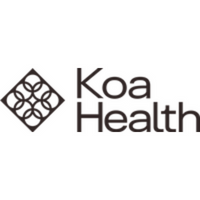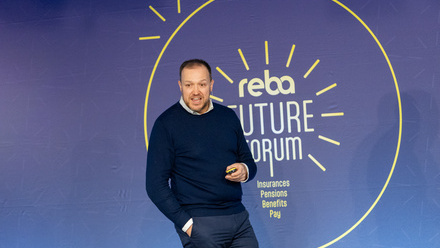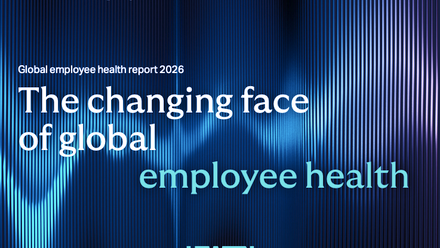How to use employee data to predict the future of benefits
To paraphrase an old saying, those who don’t learn from the past may be doomed to repeat it, particularly the less-than-favourable parts. This is why employee data – both quantitative and qualitative – is crucial for forecasting future needs and taking both restorative and preventive action to build a better employee experience.
Employers cannot offer their workforce the support they need without accurate and reliable information, especially about employee mental health and wellbeing. If you don’t understand employees’ needs, then deciding your next moves as an organisation, and identifying ways to improve, are almost impossible.
Knowledge of past events can help you prepare for the future. Careful analysis of employee data can help you anticipate needs and provide your teams with the resources they need to thrive in your workplace. But organisations that want to leverage employee data must ensure their employees are comfortable sharing their data in the first place.
Demonstrate the value of sharing data
Employees may be more open to sharing their data than employers expect, as long as it provides them with something of value. According to research from Accenture, most employees – 92% – would let their employers collect and use their data in exchange for perceived benefits such as improvements in productivity or mental or physical wellbeing.
To maintain employees’ trust long-term, organisations must also demonstrate their commitment to protecting workers’ privacy, dignity and autonomy. And as companies amass more significant volumes of employee data this becomes even more important.
While technology has made data collection more manageable than ever before, there are key steps organisations can take to reduce friction when collecting and analysing data and improve forecasting.
Keep the data anonymised (and organised)
Gathering, organising and analysing large quantities of data while protecting privacy can seem daunting, even with the most modern technology. But compiling and acting on data is made simpler when all the data on a topic is labelled correctly and lives in one secure place. Ensure the technology you use keeps employee private information private.
For example, the data Koa Health gathers on users is carefully aggregated and anonymised before it is shared with employers. This way, employers get valuable insights into their employees without compromising privacy. Employees can access the support they need and feel secure that their information isn’t affecting how they’re evaluated at work.
Only collect what you need now
Data minimisation, a GDPR principle, means you should only collect what you know you need to achieve your stated goals, to get a complete picture of what is going on and provide what employees want.
Collecting data because it might be useful someday will at best make analysis more complicated and at worst be illegal and won’t help predict future needs, either. It’ll also create additional data your cyber security team will need to protect.
Use data ethically
You must maintain employee trust, comply with current legal, regulatory and ethical considerations, and maintain internal norms of use to protect the interests of both workplaces and workers. This means carefully evaluating how external service and benefits providers handle employee data, too.
Give your staff security … and autonomy
Ensure your workforce is aware of how their data is used and what happens to it. Make it clear how their data sharing is beneficial – both to them individually and to the organisation. When possible, give people access to and control of their own personal data.
Digital tools typically require a minimum level of data collection to function, but wherever possible users should be able to opt out of data collection and still be able to use a resource.
For example, workers at Koa Health all have access to its evidence-based wellbeing app, Koa Foundations, but can opt out of analytics data collection whenever they like. Employees also have continuous access to the platforms used for feedback and can download their reviews from managers and coworkers at any time.
Use data to protect employees and avoid repeating mistakes
Using new technologies and data responsibly, companies can leverage the past to predict and prioritise the future needs of their workforce. They can potentially protect their employees’ individual physical and mental health and the health of their businesses as a whole.
Organisations must be careful, however, to use data to move forward: learning from but not reliving or dwelling on past mistakes.
Supplied by REBA Associate Member, Koa Health
At Koa Health, we believe digital mental health solutions are the answer to mental health issues.








